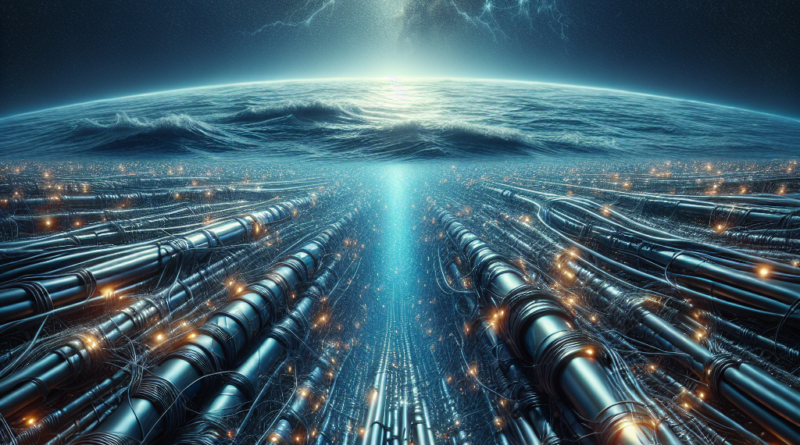The Rising Threat to the Hidden Network of Cables Powering the Internet
The World of Internet Beneath the Surface
When we think about the internet, we often picture something abstract traveling through the air.
This perception is fueled by the fact that most internet connections nowadays happen wirelessly through wireless technology.
However, it’s important to know that almost all internet traffic, from browsing the web to streaming movies or chatting, travels through fiber optic cables positioned on the ocean floor.
This is how information moves across the globe and how islands get connected to other nations.
It is estimated that there are nearly 1.5 million kilometers of undersea cables carrying internet connectivity around the world.
The majority of these cables are located in the Northern Atlantic Ocean, connecting the United States and Europe.
By 2023, there were around 500 submarine cables concentrated mainly near the most important and popular economic centers.
Relying on submarine cables for internet connectivity, which is crucial today, also exposes vulnerabilities that can lead to significant issues.
The Case of Tonga and Undersea Cables
An emblematic example is the case of Tonga, which in 2022 was completely isolated from the rest of the world due to a rupture in the undersea cable connecting the island to the mainland.
The rupture was caused by an underwater volcano eruption that triggered tsunami waves in the nearby Tongan archipelago, covering the island’s white coral sands with ash.
Tonga remained cut off for days, facing not only communication loss but also significant economic repercussions.
Risks Associated with Undersea Cables
Today, relying on undersea cables for internet connection poses risks.
Factors like sharks, aggressive fishing, and ship anchors constantly endanger internet connectivity.
A single mishap can lead to cable breaks, resulting in numerous problems.
Moreover, these cables are not heavily protected but rather are slightly thicker than a garden hose and only shielded by water, making them susceptible to damage.
Additionally, in modern times where warfare is prevalent globally, there is another security concern that should not be underestimated.
Sabotage as a Threat
The fact that sensitive information of world powers like the United States, China, and Russia travels at the bottom of the ocean opens up possibilities for sabotage.
As early as 2017, NATO officials reported increased Russian submarine surveillance of internet cables in the Northern Atlantic.
In 2018, the Trump administration sanctioned a Russian company for providing “submarine capabilities” to Moscow, aimed at monitoring the undersea network.
Targeting internet cables has long been a weapon in Russia’s arsenal.
During the Crimea conflict in 2014, Putin cut the main cable to the island, leaving the area without connectivity.
This move allowed the Kremlin to control the internet infrastructure and spread misinformation.
The United States and its allies have also expressed serious concerns that adversaries could intercept undersea cables to obtain personal information, data, and communications.
In conclusion, it’s essential to tread carefully and explore alternative solutions for internet connectivity, such as satellite technology.
For further reading, check out “NSA is Taking Over the Internet”: U.S.
and Mass Surveillance.




